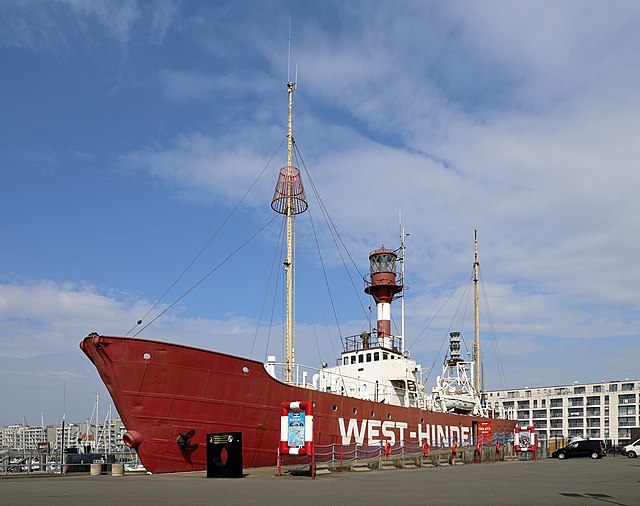United States lightship LV-117
LV-117 was a lightvessel of the United States Lighthouse Service. Launched in 1931, she operated as the Nantucket lightship south of Nantucket Shoals. Moored south of Nantucket Island, Massachusetts, the lightship was at the western part of the transatlantic shipping lane and the first lightship encountered by westbound liners approaching New York Harbor. On May 15, 1934, one of these liners, RMS Olympic, rammed and sank LV-117, killing seven of her crew.
United States lightship LV-117
RMS Olympic passes Nantucket Lightship 117 close aboard in early January 1934. She sank the lightship four months later.
A lightvessel, or lightship, is a ship that acts as a lighthouse. They are used in waters that are too deep or otherwise unsuitable for lighthouse construction. Although some records exist of fire beacons being placed on ships in Roman times, the first modern lightvessel was off the Nore sandbank at the mouth of the River Thames in London, England, placed there by its inventor Robert Hamblin in 1734. The type has become largely obsolete; lighthouses replaced some stations as the construction techniques for lighthouses advanced, while large, automated buoys replaced others.
Lightship Finngrundet, now a museum ship in Stockholm. The day markers can be seen on the masts.
Fehmarnbelt Lightship, now a museum ship in Lübeck
Bürgermeister O´Swald II was the world's largest manned lightship, the last lightship at position Elbe 1. In the picture on a visit to Ystad 12 July 2017.
Former Belgian lightship West-Hinder II, now a museum ship in Zeebrugge






